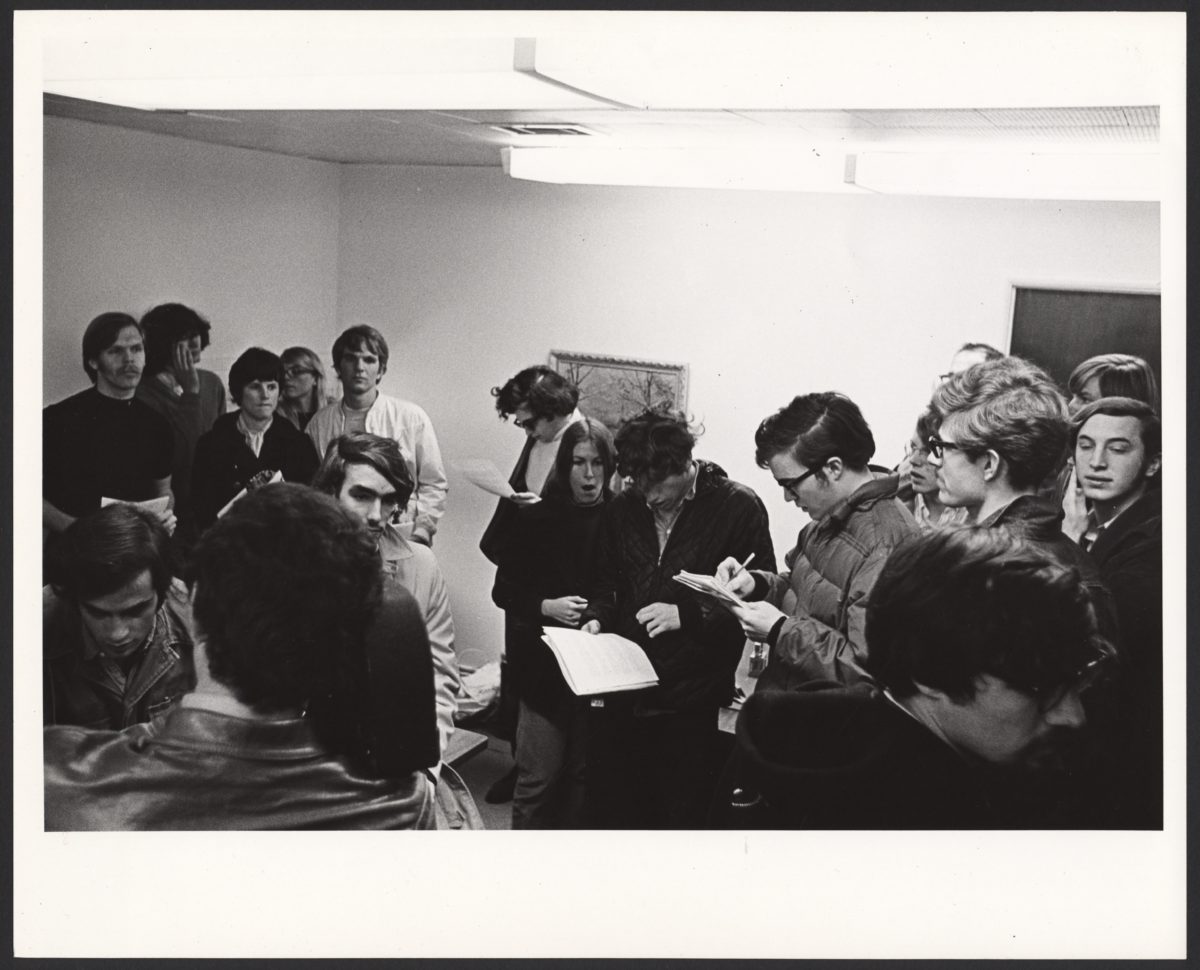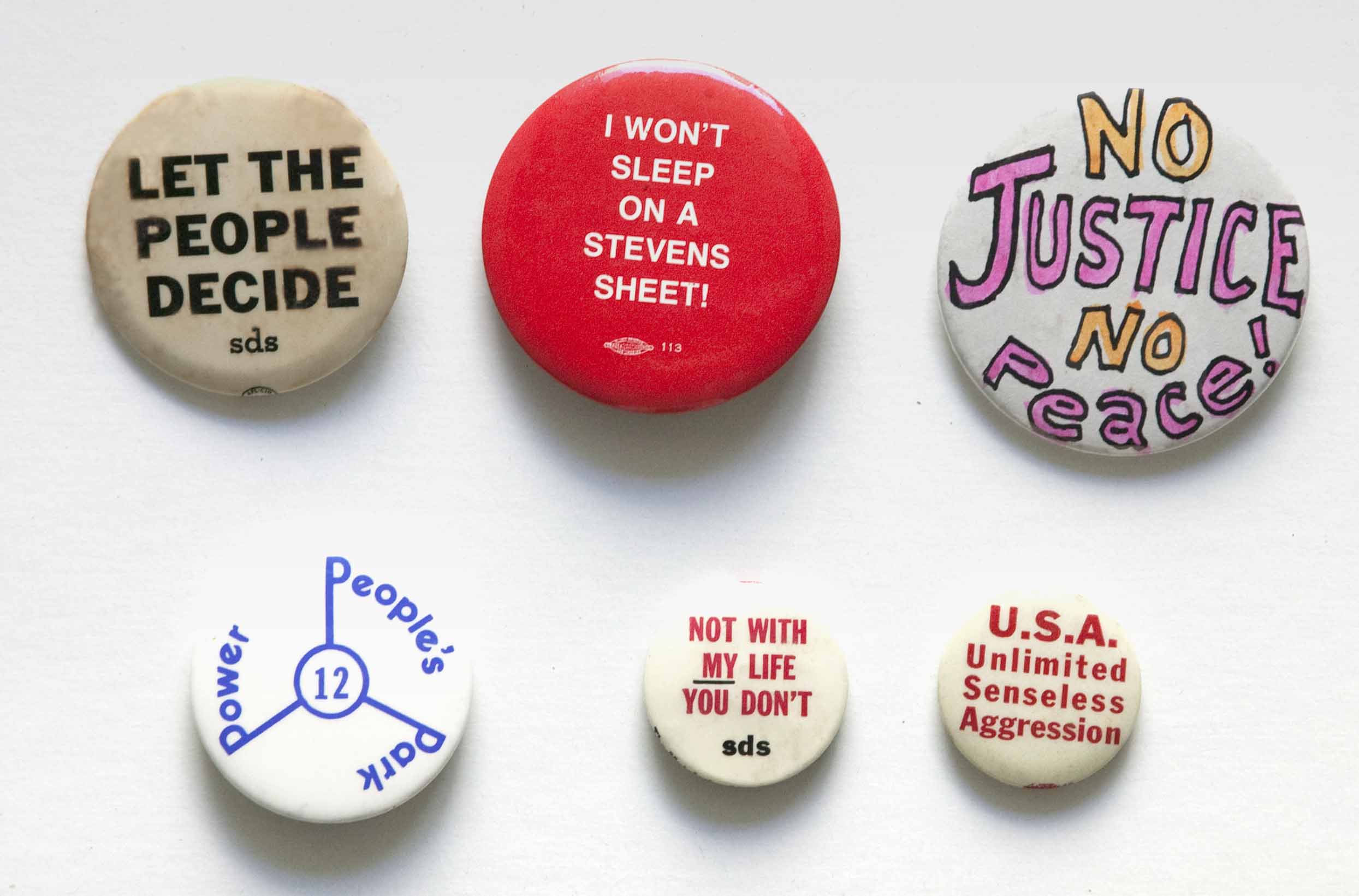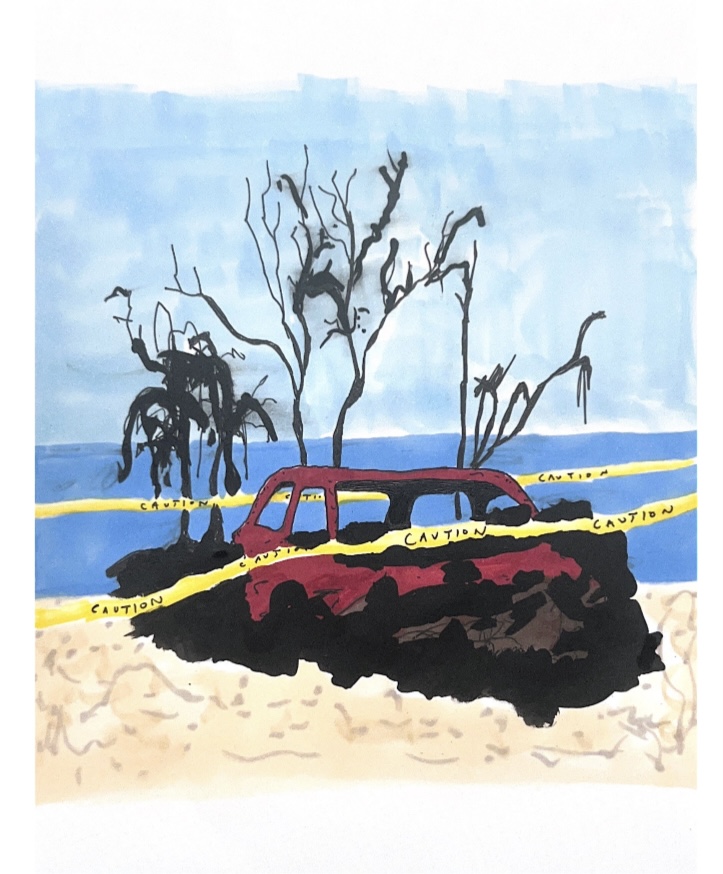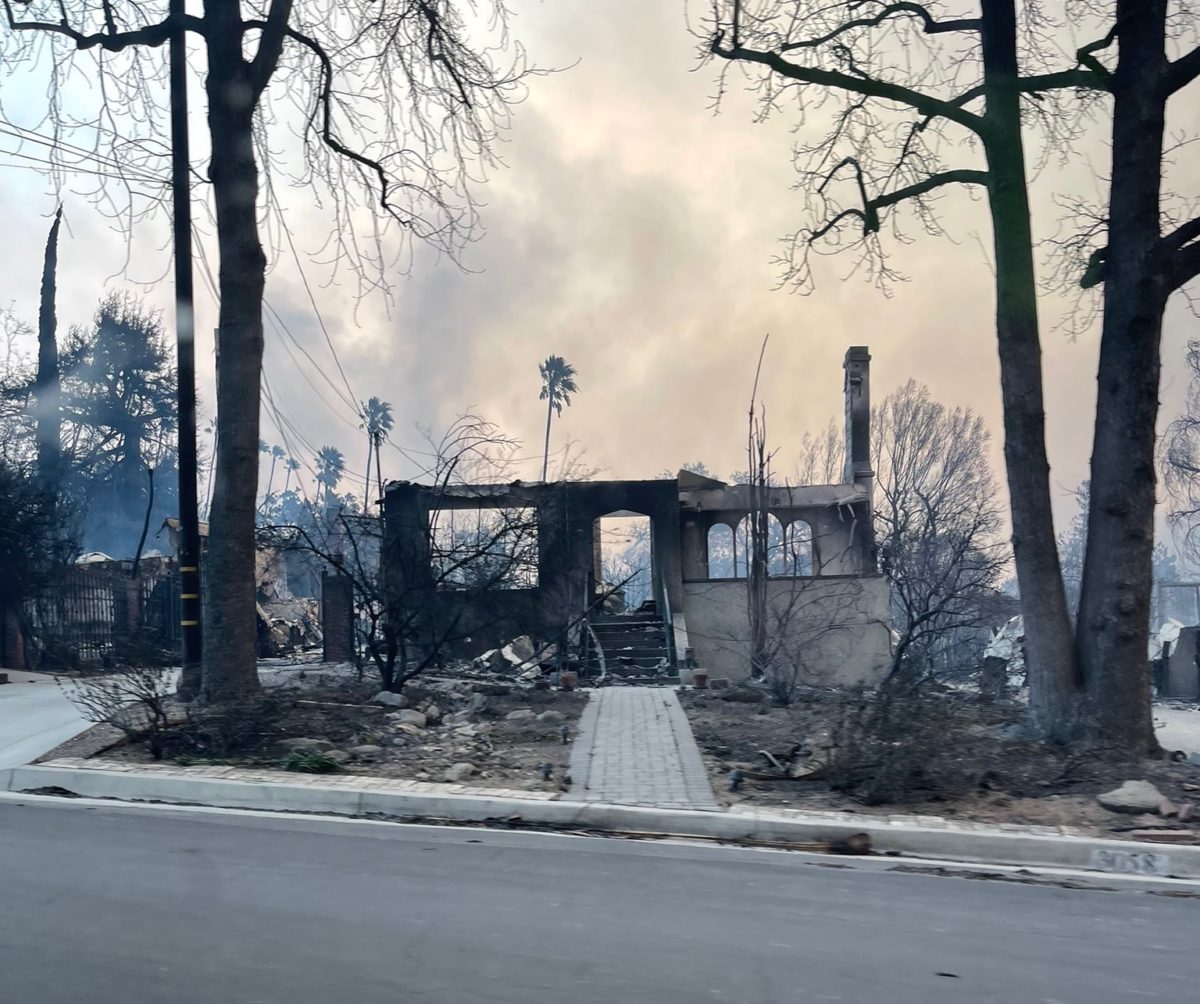
At Stanford, everybody went Maoist in the fall of ‘68.
Well, everybody in Stanford SDS, which was my world. As the child of English left-wing parents, I had gravitated immediately to the “Students for a Democratic Society”—the vanguard of student radicalism—when I came to Stanford as a graduate student in 1966. I knew about SDS from my undergraduate career in the mid-60s at the London School of Economics, the hereditary institution of the London left. It was full of Americans taking a year in Swinging London and SDS had a presence. I liked the irony in their 1964 slogan—Part of the Way with LBJ. My first day I found the SDS recruiting table at registration and signed up.
I was supposed to be at Stanford for a PhD in Mathematical Statistics, under the influence of my father, who greatly admired a famous English statistician named Austen Bradford Hill, director of the first clinical trial for TB, of streptomycin. (George Orwell was put on streptomycin but couldn’t tolerate the drug.) I had no intention of becoming a statistician. I was trying to get away from my father and class-conscious England; as the child of a Jewish father and a mother of working- class origin in snobby British society, I never felt I was going to fit in. Not only that but they had sent me to a “Public School,” i.e. one of the ancient private schools that educate the English elite. It was the kind of school that caused a sharp intake of breath when someone found out you had gone there. At some level I figured I would have a better shot at breaking out of it all—out of the class system, “Public School,” bloody statistics, and the baleful influence of my father—in America. This turned out to be true. There was a lot of peer support for breaking out of the box in California. Pretty much everybody broke out of one box or another in California around 1968.
It was the Vietnam war, of course. Even in England we had demonstrated against the war, outside the giant, brutalist American Embassy building in Grosvenor Square. Actually I had been a teenage militant, painting “Yankee Go Home” on London walls. I was busted with Bertrand Russell (and about a hundred other people) for sitting down in Whitehall outside the Ministry of Defence and fined a ridiculously small two pounds. I was arrested again for invading the American air base at Ruislip. We climbed over the wire, went limp and got carted away, and were “bound over to keep the peace.” In other words, we were made to promise not to do it again. I suppressed all this during my application for a student visa to the United States.
I didn’t know much about the US and I certainly didn’t know much about Stanford. I didn’t realize there was a difference in the US between public and private universities. I was astonished when I discovered the sun-drenched campus with its blond female undergraduates tooling around in Maseratis and its own golf course. Universities in England didn’t have their own golf courses. Stanford was still “The Farm” in 1966, just breaking into public view as the home campus of Silicon Valley. I went there because they gave me a scholarship (funded by the Office of Naval Research, a fact I suppressed in the anti-war movement) and because my aunt lived in Palo Alto. And anyway, California!—beaches, palm trees, the Mamas and the Papas, singing “California Dreamin’” as we crested the Sierra Nevada and came down into Auburn. Who wouldn’t want to be in California in 1966? I got there, signed up with SDS and was immediately put to work writing a leaflet explaining, in grinding detail, why the United States was wrong in Vietnam.
My wife probably didn’t want to be in California; she was American but she preferred England. She went to work for the Welfare Department in San Jose and rapidly ran into trouble for wearing skirts so short they gave an occasional flash of underwear (Swinging London skirt length). Nor did she like the Marxist reading group we had started under the influence of a San Francisco State academic named Jim O’Connor who was running around the Bay Area setting up reading groups like a Marxist Johnny Appleseed. After an impossibly tedious Marxist remark from one reading group member she reared up and threw a cup of coffee at his head.
Stanford continued to regard us as ungrateful children, treating our perhaps rather naive negotiators with supercilious contempt…. But Stanford jacked up the salaries for TAs and RAs by a sizeable amount anyway, so I counted it as a victory.
Being from an Old Left background myself, I started a union. We were American Federation of Teachers Local 1816, Stanford Employed Graduate Students, and our power bases were in the English and Poli-Sci departments. The university studiously ignored us till I managed to get strike sanction from the Santa Clara County Labor Council. What this meant, an old labor militant explained to me, was that the Teamsters would black the campus if we went on strike—there would be no deliveries. Stanford continued to regard us as ungrateful children, treating our perhaps rather naive negotiators with supercilious contempt. This wasn’t helpful but it did provide a genuine learning experience. “I was horrified,” one negotiator said. “I expected at least a mature attitude from the Administration.” But Stanford jacked up the salaries for TAs and RAs by a sizeable amount anyway, so I counted it as a victory. I wrote about all this in the Stanford Daily, indulging in a new-found desire to be a writer. Being from the cinéaste generation that grew up on Godard and Truffaut and Cahiers du Cinéma I had previously wanted to be a film director. Everybody did.
Meanwhile LSD hit the campus. Wallace Stegner had brought Ken Kesey into the creative writing program and Kesey had been introduced to acid by Vic Lovell, an über-hip psychologist at the Menlo Park VA. (Kesey dedicated One Flew Over the Cuckoo’s Nest to “Vic Lovell, who told me there were no dragons and led me to their lair.”) Now Kesey and his pranksters were in La Honda in the hills above Stanford, blasted out of their minds and leading the youth of California astray. Or leading them towards enlightenment, depending on your point of view (Stegner hated Kesey). On the sunbaked campus even the occasional graduate statistician could be seen wandering around having visions. Others were getting their minds blown in encounter groups or in the psychodrama workshops of Husain Chung, a guru of the kamikaze school of psychotherapy. All these tendencies plus a few of Stegner’s western writers from the writing program coalesced in the Free University, the power center of high-end hippyism at Stanford and the opposite camp from us “radicals.” We thought they in the Free U were trivial hippies and they thought we were stuck-in-the-mud lefties. However, there was plenty of overlap on key topics such as getting loaded, protesting the Vietnam war, and music.
The Grateful Dead were playing—my wife and I lived in what was allegedly a former Grateful Dead house in Palo Alto—and the music in the Bay Area was, let’s face it, better even than in Swinging London. We were at the great Human Be-In in January 1967 when Timothy Leary went public for the first time with “Turn on, tune in, drop out!” and the Hells Angels did the childcare. We drove up to the Fillmore in San Francisco to hear the Dead and in a moment of transcendence Bill Graham took my check for $2 and let me in. Soon it was the Summer of Love.
Don’t get me wrong, the Summer of Love was OK. Everybody did smile at each other for a while (even if most of them were stoned) and a lot of sex was had by those who, unlike me, weren’t married. Also rock and roll bands formed as if by spontaneous generation: at Stanford a bunch of students who couldn’t play a note disappeared into a house in the hills with plenty of drugs and musical instruments and reappeared as a fully-fledged, self-created band, the Anonymous Artists of America. Their music was… OK, I guess. Loud, at least. (Question: “What kind of music do you like to play?” Jerry Garcia: “I like to play loud.”)
There was a dark side, of course. My then brother-in-law, who was working for the Haight-Ashbury Switchboard, was walking down Haight Street one day, stoned on acid, and his soul came out of his mouth and bounced away down Haight Street and then a dog ate it. This caused him to have a psychotic break. He threatened to kill my sister-in-law and wound up in Napa State Hospital for a while. Meanwhile a friend of mine, a graduate student from the Statistics Department who had moved up to the Haight-Ashbury to be in the center of the historic doings, had taken to walking around Haight Street with a knife in his belt. This was the beginning of the collapse into speed that destroyed the hippie moment in San Francisco and scattered many into communes in the country.
The Summer of Love was also Vietnam Summer. Johnson had been escalating the war, increasing US troop strength in Vietnam, and under the pressure to find new bodies he (or somebody) had made the mistake of cutting back on the student deferments that kept the campuses quiet. Respectable people, including my uncle in Palo Alto, campaigned for Eugene McCarthy for President, the first time a Democrat had run against an incumbent Democratic President (End of the Way with LBJ!). Meanwhile we in SDS burned draft cards. I didn’t have a card myself but I did get a draft notice at the end of 1967 (they drafted foreign students) and got out of it because my son had been born and I was classified 1-Y.

On the Stanford campus the sharp end of the anti-war movement in 1967 was the Quakerish and high-minded Resistance, among them our Student Body President David Harris, who was jailed for fifteen months for refusing to go. But things turned violent in October with the huge Stop the Draft Week protests at the Oakland Induction Center, when some two thousand police and sheriff ’s deputies busted more than a hundred people, including Joan Baez and her mother. It was the beginning of the era of confrontation, “taking the war to the streets.”
I myself was unable to attend the Induction Center riot because I was down in Santa Clara (there were still cherry orchards in Santa Clara) where my son was being born in the Kaiser Hospital. My wife had an impossibly long labor and I was in there doing Lamaze breathing with her for hours and hours (it didn’t help). She was very much on trend with Lamaze breathing, breastfeeding, and having me in the delivery room, although the head nurse was old school and disapproved visibly of dads at the birth.
We had an underground newspaper in Palo Alto run by graduate students, many of them from the Union and several of them future figures in the local revolutionary movement. Boringly named the Midpeninsula Observer, it was very political, too political, and a bit too heavy-footed for the underground press, which was rising up all around us and was mostly closer to the hippie end of things. We had exchanges with all the other underground papers. I still have a box in my basement filled with Berkeley Barbs and LA Free Presses and East Village Others and Great Speckled Birds and Rats. I know the Black Panther is in there too, the Panther paper out of Oakland and the voice of the other half of our political universe, the “Black Liberation Struggle.”
The Midpeninsula Observer (later, for some reason, the Peninsula Observer) was well edited thanks to a bunch of English Department graduate students and Marlene Charyn, a real editor who had been working for the Stanford Press and who taught me to edit. Eventually I fell in love with the charismatic Marlene—pale- skinned, dark-haired, Madonna-like but ex-Catholic. Somebody else taught me to do layout, waxing the text strips of the articles down on large, blue-lined layout sheets and filling the space between them with ripped-off graphics from the rest of the Underground Press (or anywhere else. It was like the Internet). Then we hauled the sheets to the one printer in San Francisco who would print radical publications.
The underground press was free form, it was freewheeling and it was a free-for- all—Utopia! I wrote articles. I sold the damn thing on the streets of Palo Alto and eventually I got to take turns as editor-of-the-issue. I was amazed they let me do this. I put it down to my English accent: it makes Americans think you know what you’re doing. We whacked away at Stanford for its military connections, reported on the Black Panther Party and in 1967 we published the first feminist article anybody had ever seen around Stanford. It was by Melody Ermachild (she had changed her name from Melody Killian) and its directness and intransigence blew everybody’s mind. Marlene went off to cover the Huey Newton trial in Oakland (the leader of the Black Panther Party had been accused of killing a cop, which he quite likely did) and began a romance with the Panthers that ended up with a stretch as Eldridge Cleaver’s actual girlfriend. Cleaver came to speak at Stanford’s Memorial Auditorium some time around then and in the middle of a violent diatribe against the press he paused for breath and then remarked parenthetically “Except for miss Marlene Charyn of the Peninsula Observer.”
And, in an iconic moment two pissed-off adults, who hated either our politics or our general insouciance, barged through the Observer door one day while we were putting the paper to bed and demanded “Who’s in charge here?”
“We are!” we responded, seizing the moment.
But over the dramatic 1968-69 school year Bruce and the Red Guards metamorphosed into a more serious revolutionary formation, in alliance with Bob Avakian’s Revolutionary Union out of Berkeley, and almost everybody I knew joined up. I didn’t. I grew up among disillusioned communists back in England and I didn’t believe in Stalin. Nor did I believe the revolution was right around the corner.
In February 1968 the Tet offensive in Vietnam made it clear that what we radicals were saying was actually true: A good chunk of the population of South Vietnam didn’t want either the US or the current military junta running the country. The North Vietnamese sacrificed much of the NLF, the southern guerilla force, in the offensive and the US military claimed a victory. But Tet shifted the balance of US public opinion against the war. For LBJ it was all downhill from there. For us radicals, we had the bit between our teeth. Then came the rest of 1968—Czechoslovakia, Paris, Columbia, Berkeley!—every campus in America seemed to be up in revolt. “Bliss was it in that sweet dawn to be alive,” as Wordsworth put it. Lyndon Johnson resigned as Democratic candidate in favor of Hubert Humphrey. We turned our backs on Humphrey and walked out on him when he came to Stanford to speak at Memorial Auditorium—he had sold out his liberal inheritance to support Johnson’s war. He blustered and huffed and completely lost his cool. He couldn’t imagine being insulted by students at Stanford. Amazingly there was considerable faculty support for the walkout.
The enormous riots after the assassination of Martin Luther King, Jr. (a thousand buildings burned in Washington D.C. alone) seemed like they were taking us toward civil war. And then came Bobby Kennedy’s assassination and then Mayor Daley’s brutal police riot at the Democratic Convention in Chicago. By the fall of 1968 half of SDS had turned themselves into revolutionaries.
At Stanford Bruce Franklin, a young English professor and Melville expert, had come back from Paris a Maoist. Soon rumors floated around the campus about Bruce’s new organization, the Red Guard. It was by invitation only: those that knew, didn’t tell. It was all about Mao and the Cultural Revolution over there in China, of which we knew just about nothing. SDS luminaries began to disappear into the Red Guard, going silent when they entered. At our first Stanford sit-in, at the Old Union building, Bruce Franklin rose up at a huge meeting to debate tactics with Steve Weissman, a Free Speech movement veteran from Berkeley but clearly not a revolutionary. A frisson ran around the radical masses. Bruce! The revolution! The new thing!
I finally decided to punt statistics and enrolled in the only classes in my entire academic education that I actually took for pleasure: Film History and Karate (self-defense was part of the new revolutionary identity). But I couldn’t quite manage to get myself out of Stanford. My letters from the time are full of tedious whining about my indecision and cowardice. Then Stanford itself provided the route. The Student Health Service offered free counseling for those having Doubts and I lucked into a blond hippie-mama psychologist from the Free University who I had seen around campus with two beautiful blond kids hanging off her. She showed me the way. “Get up,” she said, and she waved me into a corner. Then she blockaded me in with her body, barring the way out with her arms, holding me in on both sides. “Get out!” she said.
She was strong! I had to fight my way out. It was sexy, but it was enlightening—fight your way out!
I did, eventually. But over the dramatic 1968-69 school year Bruce and the Red Guards metamorphosed into a more serious revolutionary formation, in alliance with Bob Avakian’s Revolutionary Union out of Berkeley (the real action always seemed to be up at Berkeley), and almost everybody I knew joined up. I didn’t. I grew up among disillusioned communists back in England and I didn’t believe in Stalin (Foundations of Leninism by J.V. Stalin was on the Revolutionary Union reading list). Nor did I believe the revolution was right around the corner. I got up at an SDS meeting, one of the last SDS meetings before the organization dissolved, and argued with Bruce that there were other models of socialism available. But it was useless, the membership had revolutionary stars in their eyes.
At a big and violent demonstration against the Stanford Research Institute, a para-Stanford think tank where military research was being done, the Revolutionary Union organized us into affinity groups, each one led by an RU cadre. My affinity group was the “Concerned Stalinists for Peace and Justice,” call sign “Stalinists! Stalinists!” showing that a sense of humor persisted among the campus Maoists (but not for long). There was also the “William P. Hewlett Fragmentation Bomb Brigade,” after the famous trustee and founder of Hewlett-Packard, call sign “Hewletts! Hewletts!” but that’s all that I can remember. We threw rocks through the SRI windows and set barricades on fire. The police arrived and drove us away with tear gas, and the enduring memory I have of that event is of my wife legging it away from the tear gas while pushing a stroller with our year-old son in it. During all of this the Young Americans for Freedom, the student right-wingers, took photographs of us for police purposes.
Up at Berkeley the People’s Park riots were happening, with the Alameda County sheriff’s deputies managing to kill one man (James Rector) and blind another (Allan Blanchard) with shotguns. Governor Reagan called in the National Guard and the campus was flooded with tear gas. Nobody had ever seen anything like it: it felt like war. We from Stanford went up to Berkeley for the big and (maybe) peaceful march to People’s Park a couple of days later, wearing our US army plastic helmet liners, proof against police batons, and damp bandannas against tear gas. The sheriff ’s deputies were up on the roofs, carrying automatic weapons this time, but nobody got killed.
It was not simple. I found myself half wanting to be a revolutionary and half thinking the whole thing was absurd. All my friends were joining up and soon moving off into collectives in Redwood City and San Jose to organize the working class. At the Observer we had an interminable series of meetings about whether we should become a revolutionary collective or what, complete with long manifestos in purple ink from the same mimeograph machine in the English Department we used for Union propaganda. We even called in Vic Lovell, the same Vic Lovell who was now a luminary in the Free University, to run a group for us to figure out what we should be doing. All I can remember is that in one session he had us jumping up and down like chimpanzees and yelping. Marlene, having joined up, was the voice of the revolutionary faction in the paper and had us reading Mao—“Combat Liberalism,” “Writings from the Yenan Forum on Art and Literature,” and “Where do Correct Ideas Come From?” (In case you don’t remember, they come “from social practice, and it alone.”) Marlene was right, Mao was right, we were a bunch of liberals and we were clearly not serious: if you stayed around Stanford you were going to have to join up.
I stayed at Stanford long enough for the big sit-in at the Applied Electronics Laboratory that gave the Stanford student radicals their name (the “April Third Movement”). It ruined the career of Stanford president Kenneth Pitzer, who was finally forced to resign. I felt slightly sorry for Pitzer for many years, until I found out he was one of the scientists who testified against Robert Oppenheimer in 1954 in the hearing that destroyed Oppenheimer’s career.
The Revolutionary Union recruited me hard because I was leadership material (the Union). One recruiting effort took place at the Stanford baseball diamond, where the former leader of the Concerned Stalinists affinity group, who had beaten the draft by putting albumen in his urine, outlined the Principles of Unity of the Revolutionary Union. These were “Democratic Centralism,” “Armed Struggle,” and “Dictatorship of the Proletariat.” You had to believe in these, and also, officially at least, you had to believe in the leadership of Enver Hoxa, Mao’s Albanian ally and close comrade in arms.
“Don’t worry about that,” the recruiter told me. Evidently even the RU couldn’t swallow Enver Hoxa. I, having grown up among disillusioned Stalinists, didn’t believe in any of this but the moral pressure was intense. They were committed, they were organized, they were working to smash capitalism, what’s your problem, comrade? All my friends joined up. Guilt-ridden but liberated, I dropped (formally, finally) out of Stanford and moved up to San Francisco to work for the second-best underground newspaper in the city (Dock of the Bay, it was called, after the Otis Redding song). But really I moved up to get away from it all. No more Maoists! No more statistics! Free at last, great God almighty, free at last!




